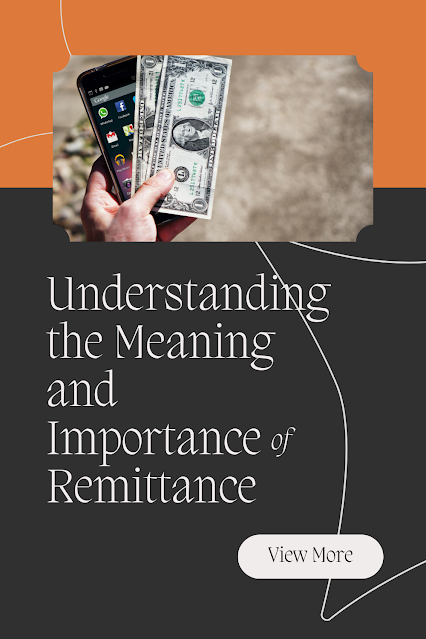In an increasingly interconnected world, the flow of money across borders has become a significant aspect of global economic activity.
One of the most vital components of this cross-border financial exchange is remittance.
Remittance plays a crucial role in the livelihoods of millions of people worldwide, facilitating financial support for families, contributing to economic development, and shaping global financial landscapes.
In this comprehensive guide, we'll delve into the meaning, significance, and mechanisms of remittance, exploring its impact on individuals, communities, and economies around the world.
Table of Contents
3. The Importance of Remittance
4. Remittance Trends and Statistics
5. Challenges and Opportunities
1. What is Remittance?
Remittance refers to the transfer of money by a foreign worker to an individual or family in their home country.
It represents a fundamental means of financial support for families and communities across the globe.
Remittances are typically sent by migrants who have left their home countries in search of better economic opportunities elsewhere.
2. Types of Remittance
There are two primary types of remittance:
Outward Remittance
This involves sending money from one country to another.
For example, a migrant worker in the United States sending money back to their family in Mexico.
Inward Remittance
This occurs when money is sent into a country from overseas.
For instance, a family member living abroad sending money to their relatives in their home country.
3. The Importance of Remittance
Remittance plays a pivotal role in the global economy and has numerous benefits, including:
Poverty Alleviation
Remittances provide essential financial support to familis in developing countries, helping them meet their basic needs such as food, shelter, and education.
Economic Development
Remittances contribute to the economic growth of receiving countries by boosting consumption, supporting small businesses, and promoting investment in infrastructure and education.
Financial Inclusion
Remittance services often reach underserved populations, promoting financial inclusion and access to formal financial services in remote areas.
4. Remittance Trends and Statistics
To understand the magnitude and impact of remittance, let's examine some key statistics:
Table 1: Top Remittance Receiving Countries (2023)
| Country | Remittance Inflows (USD) |
|---|---|
| India | $83 billion |
| China | $60 billion |
| Mexico | $43 billion |
| Philippines | $35 billion |
| Egypt | $30 billion |
Table 2: Remittance Costs by Region (2023)
| Region | Average Cost (%) |
|---|---|
| Sub-Saharan Africa | 8.9% |
| South Asia | 5.4% |
| East Asia & Pacific | 6.3% |
| Latin America & Caribbean | 6.8% |
| Middle East & North Africa | 7.3% |
5. Challenges and Opportunities
Despite its positive impact, remittance also faces several challenges, including high transaction costs, regulatory barriers, and concerns about security and transparency.
However, advancements in financial technology (Fintech) and digital payment systems present opportunities to address these challenges and improve the efficiency and accessibility of remittance services.
6. Conclusion
Remittance is more than just the transfer of money; it represents the lifeline for millions of families and communities worldwide.
By understanding its meaning, signifcance, and impact, we can work towards harnessing its potential to drive economic growth, alleviate poverty, and foster financial inclusion on a global scale.
In conclusion, remittance stands as a testament to the enduring ties that bind families and communities across borders, transcending geographical boundaries and enriching lives in ways that extend far beyond mere monetary transactions.
As we navigate the complexities of the global economy, remittance remains a beacon of hope and solidarity, reminding us of the enduring power of human connection and compassion in an increasingly interconnected world.





0 Comments